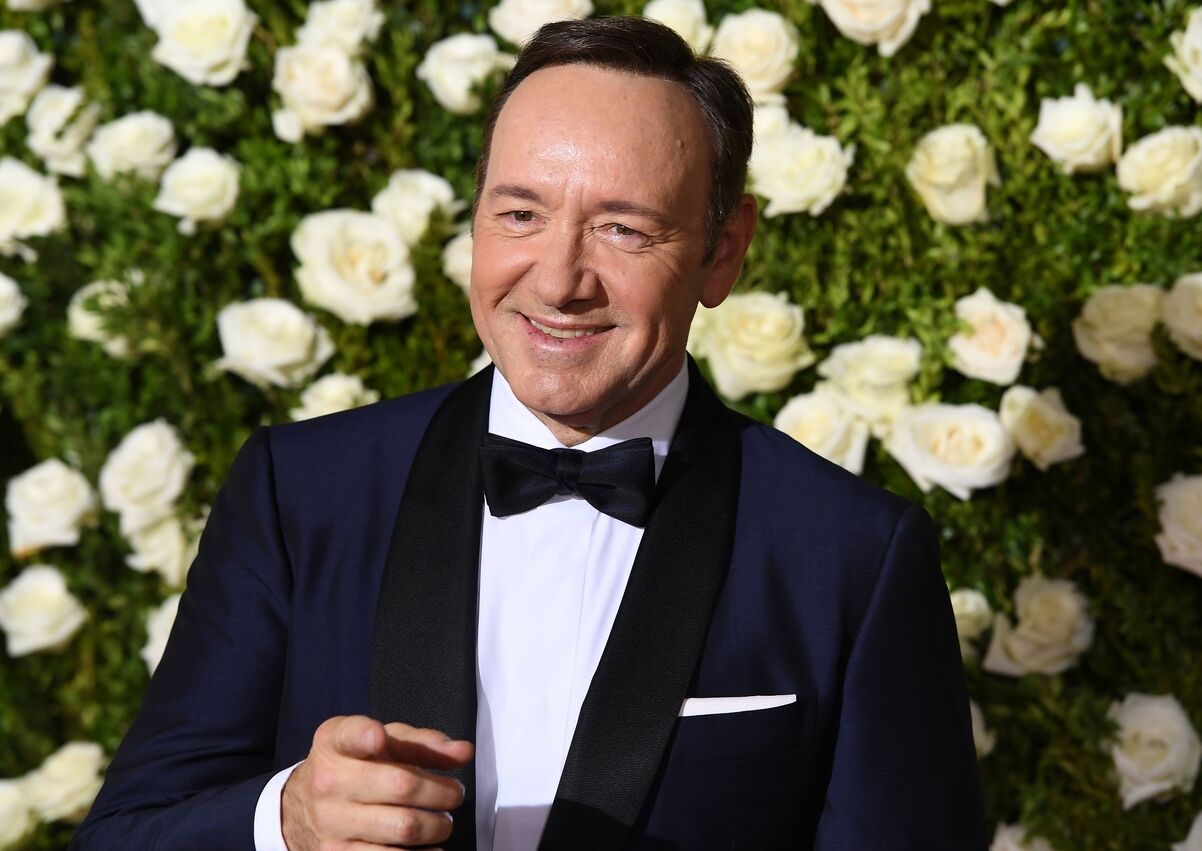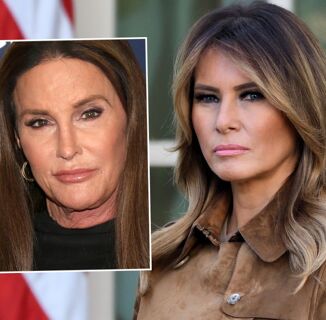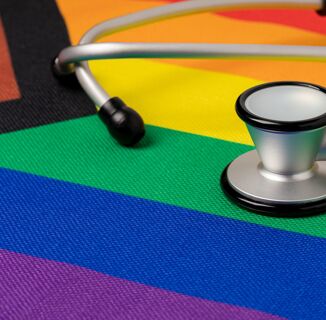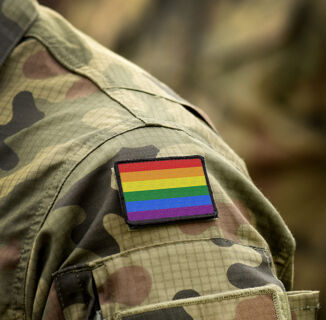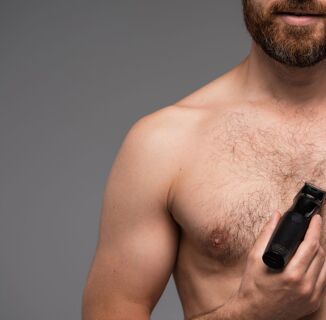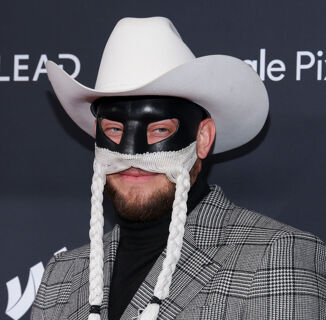The sexual assault revolution, sparked by allegations against director Harvey Weinstein, has come to the LGBTQ community.
Earlier this month, actor Anthony Rapp, the original Mark in RENT, who now plays an openly gay character on CBS’s Star Trek: Discovery, accused Kevin Spacey of sexually harassing him at age 14. In an interview with BuzzFeed, Rapp recounted that in 1986, Spacey invited him to a party. As it was winding down, the intoxicated Spacey picked Rapp up, threw him on a bed, and climbed on top of him before Rapp squirmed away. He said it made his “stomach turn” to recount the incident.
Spacey responded on Twitter, admitting publicly for the first time that he is gay.
Since then, more than a dozen more men have accused the House of Cards actor of harassment, including actor Richard Dreyfuss’ son. Netflix subsequently placed House of Cards on “indefinite hiatus” and severed all ties with the actor.
The imbroglio has prompted reflection in the gay community about its sexual mores. But it has also revived the long-dormant stereotype that gay men are predisposed to molest young boys, a favorite trope of anti-gay crusaders who have used it to deny gays’ rights for decades.
The Spacey controversy coincided with a series of sexual assault allegations against gay men in the wake of the Harvey Weinstein reports including Nashville publicist Kirt Webster, agent Tyler Grasham, entertainment executive Gary Goddard, and actor George Takei. A former male model, Scott Brunton, alleged that in 1981, Takei removed Brunton’s pants after inviting the 23-year-old to his home. Brunton was unconscious at the time and woke up to Takei “trying to get his hands down [Brunton’s] underwear.”
The 80-year-old, who played Sulu in Star Trek, said he was “shocked and bewildered” at the accusation. Takei claimed that he does not remember the incident at all.
“I’d just like to say, in advance, ‘I told you so,’” wrote WorldNetDaily columnist Scott Lively when the Spacey allegations broke. Lively, who is listed as a hate leader by the Southern Poverty Law Center, asks if this is a “tip-of-the-iceberg pederasty scandal” that will expose “the pedophile core of ‘gay’ male culture.”
Lively is among the most unhinged anti-gay bigots: He has advocated for laws criminalizing gay public advocacy, accused gay men of being the “true inventors of Nazism,” and helped export hate to African countries like Uganda, where Lively helped inspire legislation that imposes the death penalty for gay sex. (WorldNetDaily is itself no reputable publication: It’s a conspiracy-theory site that championed the birther lie.)
But the association of gay men with pedophilia is a canard that persists in the culture decades after actor and beauty queen Anita Bryant launched the “Save Our Children” campaign in 1977, which succeeded in repealing a Dade County anti-discrimination law and led California to consider banning gay people from teaching in public schools.
Even today, Family Guy regularly features an elderly gay pedophile on the show who often attempts to prey on the character of Stewie. South Park dedicated an entire episode to the National Man-Boy Love Association (NAMBLA), which advocates abolishing age-of-consent laws. For all the work LGBTQ activists have done to show gay men are not a danger to children in the era of marriage equality, the pernicious trope persists.
The truth is that there simply is no connection between homosexuality and pedophilia: The idea that gay men are attracted to young boys at rates any higher than the general population is a scientifically demonstrable lie.
But truths, as is often the case, aren’t all that simple.
The Science on Gay Pedophiles
The myth was first debunked 40 years ago in the British Journal of Psychiatry. By measuring “penile responses” (aka how erect the penis becomes) while showing gay men pictures of boys and straight men pictures of girls of different ages, researchers found that young boys did not arouse gay men any more than young girls aroused straight men. This finding has been repeated dozens of times since, each time with better and better methodology.
“There is no connection statistical or theoretical between gay attraction toward men and the proclivity to molest children,” Ray Blanchard, a sexologist at the University of Toronto School of Medicine, tells INTO.
Along with five co-authors, Blanchard conducted the most extensive of the penile response studies, published in 2010. He used a method called “volumetric phallometry,” first developed by sex researcher Kurt Freund. A glass cylinder is placed over the penis to measure changes in air pressure, which correspond to the amount of blood filling the penis.
This method yields far more accurate and granular data than the “strain gauge” method, which places a wire around the penis to measure its circumference during arousal.
Blanchard tested the sexual responses of 2,278 men, separating them into six categories. For both gay and straight men, he distinguished between pedophiles, who are attracted to prepubescent children; hebephiles, who are attracted to post-pubescent young men; and teleiophiles, who are attracted to adults. He presented each group with audio describing sexual interactions with men and women of different ages, accompanied by images.
Confirming decades of findings, Blanchard discovered that gay men are no more attracted to children than straight men. Both gay and straight men showed some arousal toward post-pubescent adolescents, but in fact, straight men were more often aroused by teens than gay men.
“You do not have to worry about hiring a gay man as a schoolteacher,” Blanchard says. “You have to worry about hiring a pedophile as a teacher.”
While lesbians have historically been less associated with pedophilia than gay men, they still must contend with the trope of the lesbian gym teacher who is way too eager for the schoolgirls to shower after class.
Here, too, the scientific research is clear: A 2016 study found, for instance, that while lesbian mothers experienced more stress in child-rearing than their straight counterparts, their children “demonstrated no differences in outcomes, despite female same-sex parents reporting more parenting stress.” This builds off a 2010 finding, based on a cross-section of lesbian families, showing that children of same-sex female couples are less likely than their straight counterparts to experience child abuse.
The findings are so robust that scientists consider pedophilia its own sexual orientation. This means that, despite what people like Scott Lively may think, there’s no demonstrable link between homosexuality and pedophilia.
Are There More Gay Pedophiles Than Straight Ones?
Behind the more cut-and-dry data are more uncomfortable findings, ones that have often been distorted to perpetuate a right-wing agenda.
Based in part on data about repeat child abusers, a 2010 study co-authored by Blanchard estimated that male pedophiles are between six and 20 times more likely to prefer prepubescent men; between 25 and 40 percent of pedophiles are men attracted to male children.
“The proportion of pedophilic men who prefer boys is multiple times higher than the proportion of teleiophilic (adult-preferring) men who prefer other men,” Mike Seto, forensic research director at the Royal Ottawa Health Care Group in Canada, tells INTO.
Blanchard, Seto, and other sex researchers stress that “homosexual” in this context does not mean “gay” as it is commonly used. For scientists, the term “gay pedophile” is imprecise and contradictory. In the scientific literature, “homosexual” denotes a person who is attracted to someone of the same sex whether they admit their attractions and embrace a gay identity or not.
On the other hand, “gay” is a political designation used to describe identity. Blanchard and other scientists refer to gays attracted to adults as “homosexual teleiophiles” (versus homosexual pedophiles).
In fact, most pedophiles who prefer prepubescent men do not identify as gay. They either describe themselves as straight with a problem or are not aroused by adults at all. “Most molesters of boys do not report sexual interest in adult men,” noted the National Academy of Sciences in a 1993 report.
But the statistic itself is tenuous.
For one thing, the sample size of the study, 260 people, is small and not necessarily representative of society at large. It relies in part on data from convicted offenders, which says more about who gets caught than the overall population of child abusers. Because of lingering stigma around homosexuality, gay men are more likely to be suspected of child abuse and monitored when they interact with children. Because of sex segregation in society, pedophiles also have more opportunities to be alone with male children than they do young girls (e.g., altar boys).
If one looks at national data about both pedophilia and hebephilia (aka attraction to adolescents), it’s clear society should worry way more about straight men molesting girls than gay men preying upon young boys.
According to the Rape, Abuse & Incest National Network, 63,000 people under the age of 18 are molested each year. Eighty-two percent of the victims are female. One in nine girls will be the victim of sexual abuse but only one in 53 boys are preyed upon. In 80 percent of cases which is to say, the vast majority parent is the abuser, which again suggests that child sexual abuse most often occurs between members of different sexes.
Even Blanchard says that his own study does not show that gay men are any greater a danger to children than straight men; his findings should not be misconstrued to mean gay men are more likely to be pedophiles.
“Gay men are just as likely to stay in their lane as heterosexual men who like adult women,” he says.
Gay Liberation Vs. Gay Rights
But the myth that gays are more likely to be attracted to children has historical roots. To understand them, one must first understand the difference between gay rights and gay liberation.
Until the AIDS crisis of the 1980s, the gay movement widely shunned heteronormativity, with LGBTQ people of the era claiming that they wanted no part in society’s love and marriage game. They billed themselves as “revolutionaries.” Instead of assimilating and getting the same rights as straights, they wanted to burn the whole system of sexual morality to the ground and start over, freeing everyone.
“Gay liberationist discourse goes beyond the state,” Jim Downs, a historian at Connecticut College and author of Stand By Me: The Forgotten History of Gay Liberation, tells INTO. “So much of what we’ve accepted today as gay rights started as gay radicalism, women’s radicalism, and black radicalism.”
The earliest “homophile” organizations like the Mattachine Society, founded in 1950, were underground groups that operated more like a terrorist cell network than a cohesive national organization. According to San Francisco State’s Marc Stein, the early Mattachine Society had strict rules about age for membership and did not bring in teens.
“They were worried about their reputation being tarnished,” says Stein, a professor in the university’s Department of History.
But after the Stonewall riots of 1969, more young men and women joined the movement. This coincided with the emergence of the Children’s Liberation Movement, which sought to recognize children mostly adolescents’autonomy, including in a sexual sense.
Today, advocacy around children focuses on saving and protecting them, but in the liberation discourse of the late ’60s and ’70s, social reformers argued that childhood itself was a social construction. Major publishers printed books about the topic like Children’s Rights (1971), where the phrase “liberation of the child” first emerged; Children’s Liberation (1973), and Birthrights; and Escape from Childhood (1974), which were extensively reviewed in mainstream publications.
At the time, reformers wanted to eliminate “discrimination based on age” and erase the line between childhood and adulthood.
“The notion that children should have a say over their sexuality, their lives, and their living conditions was actually quite prevalent during those times,” Michael Bronski, a professor in Women, Gender, and Sexuality Department at Harvard, tells INTO.
As did society more generally, gay men questioned the age of consent and censorship laws in underground publications. Photocopied by hand, these small-circulation publications were printed in large cities and distributed across the country. They discussed everything from proper etiquette for casual sexual encounters (should you make him breakfast the day after?) to how to throw a holiday get-together.
The role of youth in the movement was a frequent topic of discussion at political gatherings. Three months after Stonewall, the North American Conference of Homophile Organizations, umbrella organization comprising 14 gay liberation groups, published “A Radical Manifesto” demanding “the removal of all restrictions on sex between consenting persons of any sex, of any orientation, of any age, anywhere, whether for money or not, and for the removal of all censorship.”
Philadelphia publisher Mark Segal, then 19, founded the first group for gay teens, Gay Youth, which advocated for abolishing the age of consent.
“At the time, a lot of gay men said that, ‘Well, you know, if a 15-year-old wants to have sex, he should be able to have sex,’” Bronski says.
More controversial was the question of whether intergenerational relationships should extend to prepubescent children. This was by no means the predominant view among gay men, but the topic was not as taboo as it is today. Amid the radicalism of the era, gays and straights sought to pull loose even society’s most tightly wound structures.
Today, it may be hard to understand how gay men ever found themselves in the conversation with pedophiles. But it makes more sense if one remembers that, when it came to political power and social acceptance, gays and pedophiles had both been relegated to society’s margins; they were more likely to see themselves as plausible allies.
In the 1960s, ’70s, and ’80s, society treated openly gay men, gay hebephiles, and gay pedophiles as if they were the same. Until 1962, sodomy was a felony in all states; only in 2003 did the Supreme Court strike down such laws nationwide. Both pedophilia and homosexuality were categorized by psychiatry as mental illnesses until 1973, when psychiatrist Robert Spitzer led a revision of the American Psychiatric Association’s diagnostic manual, which delisted homosexuality as a disorder.
In the haze of history and with the AIDS crisis following it, the 1970s have been portrayed as an extended, free-wheeling orgy of gay sex. But even in cities, where gay men moved to find others like themselves, they faced crippling discrimination.
If you showed up to a job interview and told them you were gay, you’d have as much a chance of getting hired as if you were a pedophile who showed up and introduced his eight-year-old lover.
Rights Over Liberation
Then came beauty queen and actress Anita Bryant in 1977. Bryant launched a campaign, “Save Our Children,” to reverse a nondiscrimination ordinance in Dade County, which barred discrimination on the basis of sexual orientation in employment, housing, and public accommodations. A magnet for media and former poster girl for Florida orange juice, Bryant argued that gay men posed a grave danger to children.
“As a mother, I know that homosexuals cannot biologically reproduce children; therefore, they must recruit our children,” she said at the time. “If homosexuals are allowed to change the law in their favor, why not prostitutes, thieves, or murderers?”
Bryant succeeded in overturning protections for gay people in Dade County, then carried her message across the country. After the successful vote in Florida, cities like Fort Lauderdale, Gainesville, Palm Beach, and Austin rejected nondiscrimination ordinances. The national battle came to a head in California, where Proposition 6, also known as the Briggs Initiative, proposed barring gay men from working as teachers in public schools. It was defeated in 1978.
The “Save Our Children” campaign galvanized gays, but also split the community. Groups like Gay & Lesbian Advocates & Defenders (GLAD), founded in 1978 in Boston, sought a more assimilationist approach to politics, a focus on gay rights rather than liberation from the social order. The best way to improve life for gays, they reasoned, was for them to come out of the closet and convince Americans that they were normal, just like them. The organization ultimately helped bring about marriage equality.
That same year, the National Man-Boy Love Association (NAMBLA) was founded to challenge the assimilationist politics of groups like GLAD. In the spirit of ’70s radicalism, it was named provocatively, and has since been used as a cudgel against gay men.
But historians downplay its importance and point out that NAMBLA’s primary concern was never sex with children.
“The main sexual interests of men involved in NAMBLA were actually teenage boys, which is different from advocating for sex with prepubescent children,” Bronski says. “At most, it maybe included 50 members.”
NAMBLA’s role in the gay-rights movement has been exaggerated, but some of its members did advocate for pedophilia under the guise of liberating children. It was, however, smaller and more decentralized than it became in the public imagination. As gay rights progressed, NAMBLA got sidelined, slowly but surely. The rift became a chasm in 1994 when the International Lesbian and Gay Association, a queer-rights group that had achieved recognition from the United Nations the year before, expelled NAMBLA from the coalition.
With the public eye on gay rights as never before, the previous year, President Bill Clinton signed “Don’t Ask, Don’t Tell”gay rights leaders began to see organizations advocating for sex between adult gay men and adolescents as detrimental to the cause.
But it was the AIDS crisis that put an end to gay liberation. With gay men dropping like flies from the illness in the 1980s, sexual mores in the community shifted dramatically.
“In early years of AIDS, some gay activists claimed that gay men had to turn to monogamy,” Stein says.
AIDS ushered in an unprecedented era of activismi n part by forcibly outing major figures in Hollywood and media but it also helped cement the idea in some Americans’ minds that gays were sexual deviants whose behavior was being punished by God. Retroactively, the ’70s were reimagined as a time when gay men took sexual freedom too far and got their comeuppance in the 1980s. Assimilationist politics took over, ending exploratory discussions about sex and the age of consent.
AIDS activism centered around state action. Gay men wanted research, drugs, and public policy that would help stop or slow the epidemic. Gone were the days when gay men turned their nose at the house in the suburbs with a white picket fence. Gay men had to convince society to save them from a plague. As the epidemic progressed, advocacy groups started promoting safe sex instead of monogamy. Bathhouses were closed, and the epidemic put a chill on the sexual freedom gay men had enjoyed until that point.
If AIDS forced gay men to adopt more heteronormative ideas about sexuality and relationships, the arrival of marriage equality two decades later codified that cultural shift into law.
A wave of gays coming out in the late 1990s and early aughts during the fight for equal marriage dramatically changed Americans’ opinions about homosexuality. The percentage of the country that supported same-sex marriage jumped from 31 percent in 2004 to 55 percent in 2015, when the Supreme Court legalized gay marriage nationwide. Demographers call it the greatest shift on a social issue in the history of American public opinion, and are still trying to figure out how it happened.
Even as our society has passed laws delineating what is acceptable sexual activity, age-of-consent laws remain muddled and contradictory as sexuality itself. In the African country of Niger, for instance, more than 60 percent of marriages involve a female spouse under the age of 18. In Germany, a consensual encounter between an adult and a 14-year-old is perfectly legal. Most states set the limit at 16 in the United States, though same-sex intercourse is still criminalized until 18 in some jurisdictions.
Addressing sexual assault and child abuse requires holding people like Kevin Spacey accountable for their behavior as well as taking a hard look at the casting couch culture in Hollywood that has allowed predators of all orientations to operate for decades.
But it also means recognizing that we still have work left to do. The association between gay men and pedophilia is a throwback to a time when ideas about sex and consent were still in flux. People like Scott Lively will always point to outliers like Kevin Spacey as proof of the homosexual menace. It’s our job to strike back and denounce one of their favorite lies.
This article includes links that may result in a small affiliate share for purchased products, which helps support independent LGBTQ+ media.
Help make sure LGBTQ+ stories are being told...
We can't rely on mainstream media to tell our stories. That's why we don't lock our articles behind a paywall. Will you support our mission with a contribution today?
Cancel anytime · Proudly LGBTQ+ owned and operated
Read More in Impact
The Latest on INTO
Subscribe to get a twice-weekly dose of queer news, updates, and insights from the INTO team.
in Your Inbox

